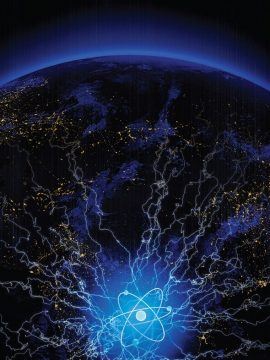Oreskes and Conway in Scientific American:
 It is a truism among scientists that our enterprise benefits humanity because of the technological breakthroughs that follow in discovery’s wake. And it is a truism among historians that the relation between science and technology is far more complex and much less linear than people often assume. Before the 19th century, invention and innovation emerged primarily from craft traditions among people who were not scientists and who were typically unaware of pertinent scientific developments. The magnetic compass, gunpowder, the printing press, the chronometer, the cotton gin, the steam engine and the water wheel are among the many examples. In the late 1800s matters changed: craft traditions were reconstructed as “technology” that bore an important relation to science, and scientists began to take a deeper interest in applying theories to practical problems. A good example of the latter is the steam boiler explosion commission, appointed by Congress to investigate such accidents and discussed in Scientific American’s issue of March 23, 1878.
It is a truism among scientists that our enterprise benefits humanity because of the technological breakthroughs that follow in discovery’s wake. And it is a truism among historians that the relation between science and technology is far more complex and much less linear than people often assume. Before the 19th century, invention and innovation emerged primarily from craft traditions among people who were not scientists and who were typically unaware of pertinent scientific developments. The magnetic compass, gunpowder, the printing press, the chronometer, the cotton gin, the steam engine and the water wheel are among the many examples. In the late 1800s matters changed: craft traditions were reconstructed as “technology” that bore an important relation to science, and scientists began to take a deeper interest in applying theories to practical problems. A good example of the latter is the steam boiler explosion commission, appointed by Congress to investigate such accidents and discussed in Scientific American’s issue of March 23, 1878.
Still, technologists frequently worked more in parallel with contemporary science than in sequence. Technologists—soon to be known as engineers—were a different community of people with different goals, values, expectations and methodologies. Their accomplishments could not be understood simply as applied science. Even in the early 20th century the often loose link between scientific knowledge and technological advance was surprising; for example, aviation took off before scientists had a working theory of lift. Scientists said that flight by machines “heavier than air” was impossible, but nonetheless airplanes flew.
When we look back on the past 175 years, the manipulation of matter and energy stands out as a central domain of both scientific and technical advances. Techno-scientific innovations have sometimes delivered on their promises and sometimes not. Of the biggest advances, three really did change our lives—probably for the better—whereas two were far less consequential than people thought they would be. And one of the overarching impacts we now recognize in hindsight was only weakly anticipated: that by moving matter and energy, we would end up moving information and ideas.
More here.
